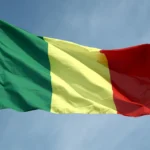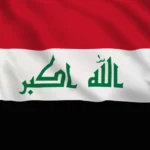
Ethiopia, a country rich in history and culture, boasts a wealth of fascinating facts and remarkable achievements. From its unique geographical features and ancient heritage to its significant contributions to global coffee production and aviation, Ethiopia presents an intriguing tapestry of stories. Here are 25 interesting and verified facts about this diverse and vibrant nation.
Capital City: Addis Ababa is the capital of Ethiopia, established in 1886 by Emperor Menelik II. Located in the central part of the country, Addis Ababa means “new flower” in Amharic. The city sits at an elevation of around 2,355 meters (7,726 feet), making it one of the highest capital cities in the world. Addis Ababa is the political, cultural, and economic hub of Ethiopia, hosting the headquarters of the African Union and various international organizations. The city’s establishment marked a significant development in Ethiopia’s modernization efforts and has since grown into a bustling metropolis with a population of over 3 million people.
Population: As of 2023, Ethiopia has an estimated population of over 120 million people, making it the second-most populous country in Africa after Nigeria. The population is characterized by a high growth rate, with a significant proportion being young, as around 40% are under the age of 15. This demographic trend poses both opportunities and challenges for the country’s development, including the need for substantial investments in education, healthcare, and job creation. Ethiopia’s diverse population includes a multitude of ethnic groups, languages, and cultures, contributing to its rich cultural heritage.
Official Language: Amharic is the official language of Ethiopia, with over 32 million speakers. It is used in government administration, media, and education, serving as a lingua franca in a country with over 80 languages. Amharic belongs to the Semitic branch of the Afroasiatic language family and is written in the Ge’ez script, one of the oldest alphabets still in use. While Amharic is predominant, other languages like Oromo, Tigrinya, and Somali are also widely spoken, reflecting the nation’s linguistic diversity.
Area: Ethiopia covers an area of approximately 1.1 million square kilometers (420,000 square miles), making it the 27th largest country in the world. This vast land area includes diverse landscapes such as highlands, lowlands, deserts, and fertile valleys. The Ethiopian Highlands, also known as the “Roof of Africa,” dominate much of the country’s terrain. Ethiopia’s size and varied topography contribute to its rich biodiversity, hosting a range of ecosystems and endemic species. The country’s geographical diversity also influences its climate, agricultural practices, and settlement patterns.
Elevation: Ethiopia is known for its high elevation, with the Ethiopian Highlands being the largest continuous mountain range in Africa, averaging about 2,500 meters (8,200 feet) above sea level. These highlands are not only a significant geographical feature but also play a crucial role in the country’s agriculture, climate, and water resources. The high elevation contributes to Ethiopia’s relatively temperate climate, despite its location near the equator. The highlands are home to many of Ethiopia’s major cities, including Addis Ababa, and are vital for the cultivation of staple crops such as teff and barley.
Longest River: The Blue Nile, which is one of the major tributaries of the Nile River, is approximately 1,450 kilometers (900 miles) long. It originates from Lake Tana in Ethiopia’s northwest and flows into Sudan, where it meets the White Nile to form the Nile River. The Blue Nile is essential for Ethiopia’s agriculture, providing water for irrigation and hydroelectric power. Its significance extends beyond Ethiopia, as it contributes about 85% of the water in the Nile River, playing a crucial role in the economies and livelihoods of several countries in the Nile Basin.
Historical Sites: Ethiopia is home to Aksum, known for its ancient obelisks and as a center of trade in the 1st century AD. Aksum, located in the northern region of Tigray, was the capital of the Aksumite Empire, one of the great civilizations of the ancient world. The city’s iconic obelisks, or stelae, are monumental tombstones made from single pieces of granite, some towering over 24 meters (79 feet) high. Aksum was a significant trading hub, connecting the Roman Empire, India, and Arabia, and is believed to be the resting place of the Ark of the Covenant in the Church of Our Lady Mary of Zion.
Oldest Christian Nation: Ethiopia is one of the oldest Christian nations, with Christianity being adopted in the 4th century AD. The Ethiopian Orthodox Tewahedo Church, one of the oldest organized Christian bodies in the world, has a profound influence on the country’s culture and traditions. King Ezana of Aksum embraced Christianity around 330 AD, making it the state religion. The church has a unique tradition, liturgy, and scriptural canon, including the Ge’ez language, which continues to be used in religious services. Ethiopia’s Christian heritage is reflected in its numerous ancient churches, monasteries, and religious festivals.
Unique Calendar: Ethiopia uses a unique calendar that has 13 months, with 12 months of 30 days and one month of 5 or 6 days. This calendar, known as the Ethiopian calendar, is about seven to eight years behind the Gregorian calendar used in most of the world. The extra month, Pagumē, consists of five days in a common year and six days in a leap year. The Ethiopian New Year, Enkutatash, is celebrated on September 11 (or September 12 in a leap year). This unique timekeeping system reflects Ethiopia’s rich cultural heritage and historical independence from colonial influences.
Coffee Origin: Ethiopia is considered the birthplace of coffee, with the coffee plant, Coffea arabica, originating from the region. According to legend, coffee was discovered by a goat herder named Kaldi in the 9th century when he noticed his goats becoming energetic after eating the berries from a certain tree. Ethiopia’s diverse coffee regions, including Sidamo, Yirgacheffe, and Harrar, produce some of the world’s finest and most distinctive coffee beans. Coffee plays a central role in Ethiopian culture, with the traditional coffee ceremony being a symbol of hospitality and social interaction. Ethiopia remains one of the top coffee producers globally, with coffee being a vital part of its economy and cultural identity.
UNESCO World Heritage Sites: Ethiopia has nine UNESCO World Heritage Sites, reflecting its rich cultural and natural heritage. These include the Rock-Hewn Churches of Lalibela, which are a group of 11 medieval monolithic churches carved out of rock; the Simien Mountains National Park, known for its dramatic landscape and endemic wildlife; and the Aksum Obelisks, remnants of the ancient Aksumite Empire. Other sites include the Harar Jugol, the historic walled city; Tiya, an archaeological site with megaliths; and the Konso Cultural Landscape, known for its unique terracing and fortified settlements. These sites are recognized for their outstanding universal value and offer a glimpse into Ethiopia’s diverse history and natural beauty.
Largest Lake: Lake Tana, located in the northwest of Ethiopia, is the largest lake in the country, covering an area of approximately 3,673 square kilometers (1,420 square miles). It is the source of the Blue Nile River and is situated at an elevation of about 1,788 meters (5,866 feet) above sea level. The lake is dotted with numerous islands, some of which are home to ancient monasteries dating back to the 14th century. Lake Tana is also an important ecological region, supporting a variety of endemic fish species and birdlife. Its waters are vital for the surrounding communities, providing resources for fishing, agriculture, and transportation.
Diverse Ethnic Groups: Ethiopia is home to over 80 distinct ethnic groups, making it one of the most culturally diverse countries in the world. The largest ethnic groups are the Oromo, who constitute around 34.5% of the population, and the Amhara, who make up about 27%. Other significant groups include the Somali, Tigray, Sidama, Gurage, and Wolayta. Each ethnic group has its own language, customs, and traditions, contributing to the rich cultural mosaic of Ethiopia. This diversity is celebrated through various cultural festivals, traditional music, dance, and attire, reflecting the country’s complex social fabric.
Highland Agriculture: The Ethiopian Highlands are significant for agriculture, producing a variety of crops that are staples in the Ethiopian diet. Teff, a tiny grain used to make injera, the traditional Ethiopian flatbread, is one of the most important crops. Other major crops include barley, wheat, maize, and sorghum. The highlands’ fertile soils and favorable climate conditions make them ideal for farming, supporting both subsistence and commercial agriculture. Highland agriculture is a vital part of Ethiopia’s economy and food security, providing livelihoods for millions of farmers and contributing to the country’s agricultural exports.
Unique Cuisine: Ethiopian cuisine is known for its unique flavors and traditional dishes, with injera being a staple food. Injera is a sourdough flatbread made from teff flour and serves as both a plate and a utensil, used to scoop up various stews and dishes. Popular dishes include doro wat (spicy chicken stew), kitfo (minced raw beef), and shiro (chickpea or broad bean paste). Ethiopian cuisine is characterized by the use of spices such as berbere and mitmita, which add depth and heat to the dishes. Meals are often shared communally, reflecting the cultural emphasis on hospitality and togetherness.
National Flag: The current national flag of Ethiopia was adopted in 1996 and features horizontal stripes of green, yellow, and red, with a blue circle and a yellow star and rays in the center. The green stripe represents the land and its fertility, the yellow symbolizes hope and justice, and the red stands for strength and sacrifice. The blue circle signifies peace, and the yellow star and rays represent unity and diversity. The colors of the flag are known as the Pan-African colors and have inspired several other African nations’ flags, symbolizing Ethiopia’s historical role in the African independence movement and its influence on the continent.
Longest-Serving Leader: Haile Selassie served as Emperor of Ethiopia from 1930 to 1974, making him one of the longest-serving leaders in Ethiopian history. Born Tafari Makonnen, he played a crucial role in modernizing Ethiopia and was a prominent figure in the African and global political arena. Haile Selassie’s reign saw significant social, economic, and political reforms, including the establishment of a constitution and efforts to centralize and strengthen the Ethiopian state. He is also celebrated as a defining figure in the Rastafarian movement, which regards him as a messianic figure. His reign ended with a coup d’état in 1974, leading to the establishment of a socialist government.
Historic Battle: The Battle of Adwa, fought on March 1, 1896, was a significant victory for Ethiopia against Italy. Led by Emperor Menelik II, Ethiopian forces decisively defeated the Italian army, preventing the colonization of Ethiopia. The victory at Adwa is celebrated as a symbol of African resistance and pride, marking Ethiopia as one of the few African nations to successfully repel European colonization during the Scramble for Africa. The battle had far-reaching implications, bolstering Ethiopia’s sovereignty and inspiring anti-colonial movements across the continent. It remains a pivotal moment in Ethiopian and African history.
Ethiopian New Year: Enkutatash, the Ethiopian New Year, is celebrated on September 11 (or September 12 in a leap year). The celebration marks the end of the rainy season and the beginning of the new year according to the Ethiopian calendar. Enkutatash, which means “gift of jewels,” is celebrated with religious ceremonies, traditional music and dance, and the exchange of gifts. The holiday holds significant cultural and religious importance, symbolizing renewal and hope. It is a time for families to come together and celebrate with feasts, emphasizing the rich cultural traditions of Ethiopia.
Highest Point: Ras Dashen is the highest peak in Ethiopia, standing at 4,550 meters (14,928 feet). Located in the Simien Mountains National Park, Ras Dashen is part of a rugged mountain range known for its dramatic scenery and diverse wildlife. The peak is a popular destination for hikers and climbers, offering challenging trails and breathtaking views. The Simien Mountains, including Ras Dashen, are a UNESCO World Heritage Site due to their unique geological formations and the presence of endemic species such as the Ethiopian wolf and the gelada baboon. Ras Dashen’s high altitude and challenging terrain make it a notable landmark in Ethiopia’s diverse landscape.
Lowest Point: The Danakil Depression, located in the northeastern part of Ethiopia, is one of the hottest and lowest places on Earth, with an elevation of about 125 meters (410 feet) below sea level. This geological depression is part of the larger Afar Triangle and is known for its extreme conditions, including high temperatures that often exceed 50°C (122°F). The area features active volcanoes, salt flats, hot springs, and colorful sulfur formations. The Danakil Depression is also home to the Dallol hydrothermal field, which boasts vibrant, otherworldly landscapes. Despite its harsh environment, the region supports a small population of Afar people who engage in traditional salt mining.
Famous Athletes: Haile Gebrselassie, a legendary long-distance runner from Ethiopia, is considered one of the greatest distance runners in history. Throughout his career, Gebrselassie set multiple world records in events ranging from the 2,000 meters to the marathon. Notably, he won two Olympic gold medals in the 10,000 meters in 1996 and 2000 and four consecutive World Championship titles in the same event. His remarkable achievements have made him a national hero and an inspiration for many aspiring athletes. Beyond his athletic prowess, Gebrselassie is also known for his contributions to business and philanthropy in Ethiopia.
Birthplace of Lucy: The fossilized remains of a hominid known as “Lucy” (Australopithecus afarensis) were discovered in 1974 in the Afar region of Ethiopia. Lucy, who lived about 3.2 million years ago, is one of the oldest and most complete hominid skeletons ever found, providing crucial insights into human evolution. Her discovery by paleoanthropologist Donald Johanson and his team marked a significant milestone in the study of early human ancestors. Lucy’s skeletal structure suggests that she walked upright, which is a key characteristic of hominids. The name “Lucy” was inspired by the Beatles’ song “Lucy in the Sky with Diamonds,” which was playing at the camp the night she was discovered.
Coffee Production: Ethiopia is the 7th largest coffee producer in the world, with coffee accounting for a significant portion of its exports. Ethiopian coffee is renowned for its high quality and unique flavor profiles, which vary by region. The country’s main coffee-growing regions include Sidamo, Yirgacheffe, Harrar, and Limu, each producing beans with distinct taste characteristics. Coffee production in Ethiopia is largely carried out by smallholder farmers using traditional methods. The coffee industry plays a vital role in Ethiopia’s economy, providing livelihoods for millions of people and contributing significantly to foreign exchange earnings.
Ethiopian Airlines: Founded in 1945, Ethiopian Airlines is the largest and most profitable airline in Africa, operating over 100 international passenger and cargo destinations. The airline has a reputation for reliability, safety, and service excellence. It serves as a critical link between Africa and the rest of the world, playing a key role in the continent’s connectivity and economic development. Ethiopian Airlines has been a pioneer in introducing new aircraft and technologies, including being the first African airline to operate the Boeing 787 Dreamliner. The airline’s success is a source of national pride and demonstrates Ethiopia’s leadership in the aviation industry.
Frequently Asked Questions About Ethiopia
General Information
Q: Where is Ethiopia located? A: Ethiopia is a landlocked country located in the Horn of Africa. It shares borders with Eritrea, Djibouti, Somalia, Sudan, and South Sudan.
Q: What is the capital of Ethiopia? A: The capital city of Ethiopia is Addis Ababa.
Q: What is the population of Ethiopia? A: Ethiopia has a large population, estimated to be over 115 million people.
Q: What languages are spoken in Ethiopia? A: Ethiopia has a rich linguistic diversity with over 80 languages spoken. Amharic is the official language, but English is widely understood, especially in urban areas.
Q: What is the currency of Ethiopia? A: The Ethiopian Birr is the official currency.
Culture and History
Q: What is Ethiopia known for? A: Ethiopia is renowned for its ancient history, diverse cultures, stunning landscapes, and unique traditions. It’s often referred to as the “cradle of humankind” due to the discovery of some of the earliest human remains.
Q: What is the history of Ethiopia? A: Ethiopia has one of the oldest continuously independent nations in the world. It boasts a rich history dating back thousands of years, with significant empires like the Aksumite Kingdom and the Solomonic Dynasty.
Q: What are the main religions in Ethiopia? A: The predominant religion in Ethiopia is Ethiopian Orthodox Christianity, followed by Islam. There are also smaller communities of other faiths.
Q: What is Ethiopian food like? A: Ethiopian cuisine is known for its unique flavors and communal eating style. Injera, a spongy flatbread, is a staple food served with various stews and vegetable dishes.
Tourism and Travel
Q: When is the best time to visit Ethiopia? A: The best time to visit Ethiopia is during the dry season, from October to May, when the weather is pleasant.
Q: What are the must-see places in Ethiopia? A: Ethiopia offers a variety of attractions, including historical sites like Lalibela, Gondar, and Axum, natural wonders like the Simien Mountains and the Omo Valley, and bustling cities like Addis Ababa.
Q: Is Ethiopia safe for travelers? A: While Ethiopia is generally safe for travelers, it’s essential to exercise caution and be aware of your surroundings, especially in remote areas.
Q: Do I need a visa to visit Ethiopia? A: Visa requirements vary depending on your nationality. It’s recommended to check the latest visa information before your trip.
Q: What vaccinations are recommended for Ethiopia? A: Consult with a healthcare provider or travel clinic for recommended vaccinations based on your itinerary and health history.
Economy and Development
Q: What is the economy of Ethiopia like? A: Ethiopia’s economy is growing, with agriculture being a significant sector. The country is also investing in infrastructure and industrialization.
Q: What are the challenges facing Ethiopia? A: Ethiopia faces challenges such as poverty, unemployment, and environmental issues. The country is also working to improve its education and healthcare systems.









